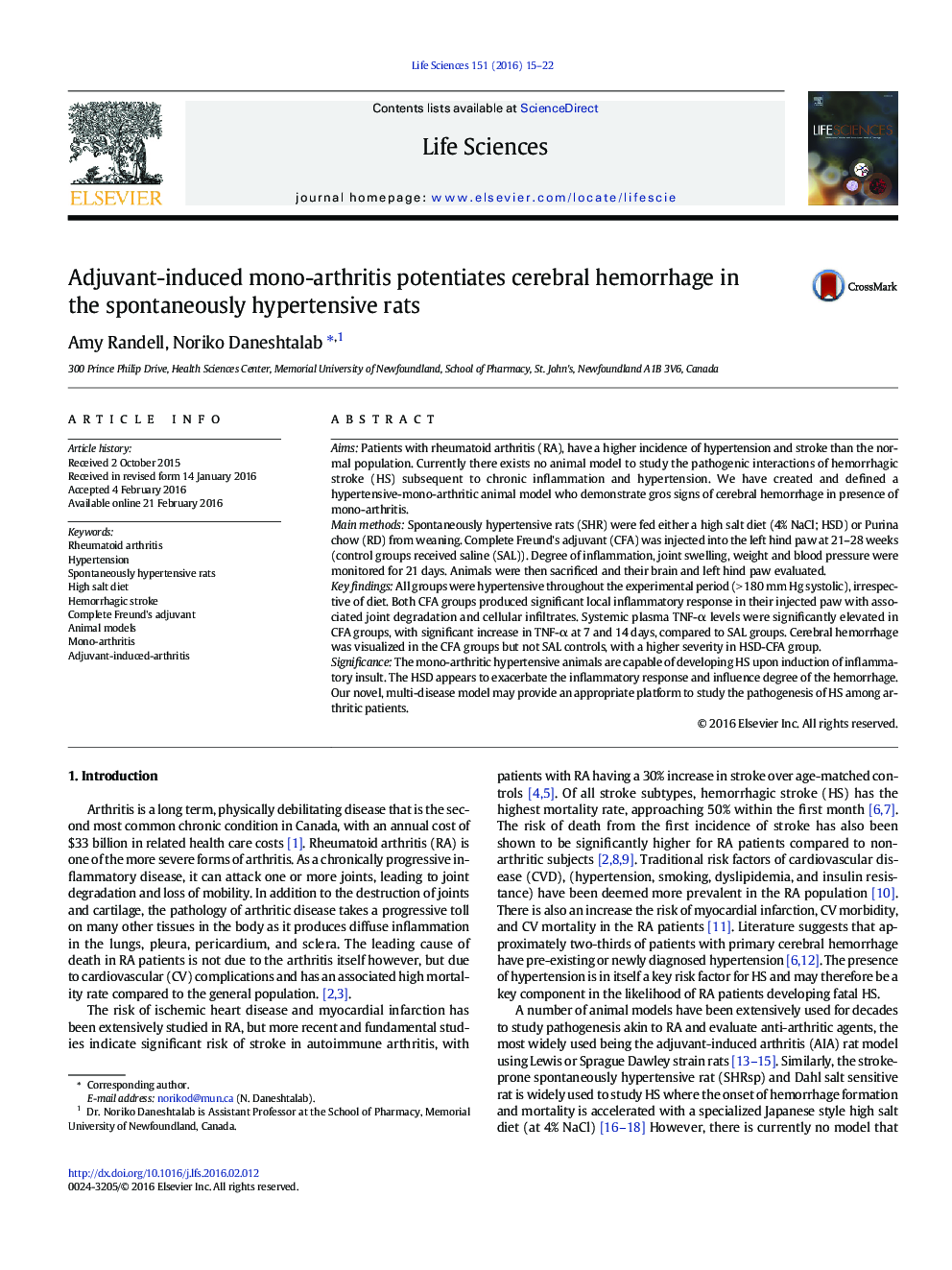| Article ID | Journal | Published Year | Pages | File Type |
|---|---|---|---|---|
| 5841349 | Life Sciences | 2016 | 8 Pages |
AimsPatients with rheumatoid arthritis (RA), have a higher incidence of hypertension and stroke than the normal population. Currently there exists no animal model to study the pathogenic interactions of hemorrhagic stroke (HS) subsequent to chronic inflammation and hypertension. We have created and defined a hypertensive-mono-arthritic animal model who demonstrate gros signs of cerebral hemorrhage in presence of mono-arthritis.Main methodsSpontaneously hypertensive rats (SHR) were fed either a high salt diet (4% NaCl; HSD) or Purina chow (RD) from weaning. Complete Freund's adjuvant (CFA) was injected into the left hind paw at 21-28 weeks (control groups received saline (SAL)). Degree of inflammation, joint swelling, weight and blood pressure were monitored for 21 days. Animals were then sacrificed and their brain and left hind paw evaluated.Key findingsAll groups were hypertensive throughout the experimental period (> 180 mm Hg systolic), irrespective of diet. Both CFA groups produced significant local inflammatory response in their injected paw with associated joint degradation and cellular infiltrates. Systemic plasma TNF-α levels were significantly elevated in CFA groups, with significant increase in TNF-α at 7 and 14 days, compared to SAL groups. Cerebral hemorrhage was visualized in the CFA groups but not SAL controls, with a higher severity in HSD-CFA group.SignificanceThe mono-arthritic hypertensive animals are capable of developing HS upon induction of inflammatory insult. The HSD appears to exacerbate the inflammatory response and influence degree of the hemorrhage. Our novel, multi-disease model may provide an appropriate platform to study the pathogenesis of HS among arthritic patients.
